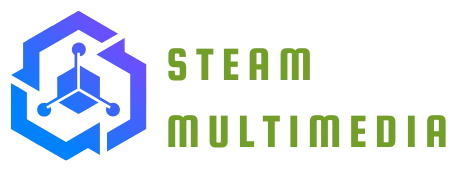Table of Contents
ToggleIn a world where distractions lurk around every digital corner, blocking unwanted domains on an iPhone can feel like a superhero move. Whether it’s pesky ads or those websites that just won’t quit, taking control of your browsing experience is a must. Imagine swiping away those annoying pop-ups like a pro, all while sipping your morning coffee.
Understanding Domain Blocking on iPhone
Domain blocking on an iPhone serves to improve the online experience by preventing access to unwanted or distracting websites. Users gain control over their browsing habits, resulting in a smoother and more focused digital environment.
Importance of Blocking Domains
Blocking domains enhances productivity. Users avoid distractions caused by unwanted ads and notifications. It also increases security by limiting exposure to potentially harmful websites. Effective domain blocking protects personal information, making online browsing safer. Users enjoy a cleaner interface, leading to a more pleasant interaction with their devices.
Common Reasons for Domain Blocking
Preventing access to websites often stems from various motivations. First, users might block domains known for excessive advertisements. Second, privacy concerns push individuals to restrict access to data-harvesting sites. Third, unwanted content, such as inappropriate material, prompts users to take action. Fourth, blocking a domain can help manage children’s internet usage. Overall, effective domain blocking addresses multiple needs, enhancing user control over their online activities.
Methods to Block Domains on iPhone
Blocking domains on an iPhone can significantly enhance online browsing experiences. Users can employ various methods, including built-in settings and third-party applications, to achieve this goal.
Using Screen Time Settings
Screen Time settings on an iPhone allow users to block specific domains effectively. To set this up, users should open the Settings app and access the Screen Time menu. After selecting “Content & Privacy Restrictions,” they can tap on “Content Restrictions.” Here, users can find the “Web Content” option, where it’s possible to choose “Limit Adult Websites” or manually add specific domains to block. By entering unwanted domains in the “Never Allow” section, users prevent access to those websites directly from their devices.
Utilizing Third-Party Apps
Third-party apps present an alternative option for blocking domains on an iPhone. Several applications specialize in enhancing internet security and privacy by filtering content. Apps like “NetGuard” and “AdGuard” enable users to block disruptive domains easily. Users simply need to download the chosen app from the App Store and configure the settings according to their preferences. These apps often provide additional features, such as ad-blocking capabilities and customizable filters, improving the overall browsing experience while increasing online privacy.
Steps to Block Specific Domains
Blocking specific domains on an iPhone enhances control over the browsing experience and protects against unwanted content. Follow the steps outlined below to effectively manage website access.
Blocking Adult Content
To block adult content, users should utilize Safari’s built-in features. Go to “Settings” and select “Screen Time.” After enabling Screen Time, tap on “Content & Privacy Restrictions.” Next, choose “Content Restrictions,” then select “Web Content.” From there, users can opt for “Limit Adult Websites.” This setting automatically restricts access to known adult domains. Users can also add specific websites under “Never Allow” for additional control. Blocking adult content ensures a safer browsing environment, particularly for children.
Custom Domain Blocking
Custom domain blocking allows users to target specific websites. Access the “Screen Time” settings and navigate to “Content & Privacy Restrictions.” Under “Web Content,” select “Limit Adult Websites” and tap “Add Website” under the “Never Allow” section. Enter the desired domain name to restrict access effectively. This feature is useful for preventing distractions from specific sites that impede productivity. Users can easily manage their browsing experience by listing unwanted websites. Custom domain blocking plays a significant role in refining online interactions.
Troubleshooting Domain Blocking Issues
Domain blocking on iPhone can face occasional challenges. Identifying and resolving these issues ensures a seamless user experience.
Common Problems and Solutions
Many users encounter problems when attempting to block specific domains. First, users might not see their changes reflected immediately. A quick restart of the device often resolves this. In some cases, blocked domains may still appear due to browser cache. Clearing the browser cache can help in these instances. Additionally, users might forget to save changes in the Screen Time settings. Double-checking and confirming all adjustments is crucial. If problems persist, users should consider updating their iOS software. Running outdated software may lead to glitches, affecting domain blocking effectiveness.
Tips for Effective Domain Management
Effective domain management enhances online experiences. Creating a precise list of domains to block prevents unproductive browsing. Regularly reviewing and updating this list keeps it relevant. Users should utilize the built-in Screen Time feature for better control over their settings. This tool also allows for scheduling blocks during specific hours, reinforcing focused usage. Parents managing children’s access find this particularly useful. Staying informed about new and emerging distracting domains ensures continued effectiveness. Exploring third-party apps can provide additional customization and functionality for managing unwanted content.
Blocking domains on an iPhone empowers users to create a more focused and enjoyable browsing experience. By taking control of unwanted distractions and enhancing online security, individuals can navigate the internet with greater ease and confidence. Whether using built-in settings or third-party applications, the methods outlined provide effective ways to manage digital environments.
Staying proactive in domain management is key to maintaining a clutter-free online space. Regularly reviewing blocked domains and keeping up with potential new distractions ensures a seamless interaction with devices. With these strategies in place, users can enjoy a safer and more productive digital life, tailored to their specific needs and preferences.




